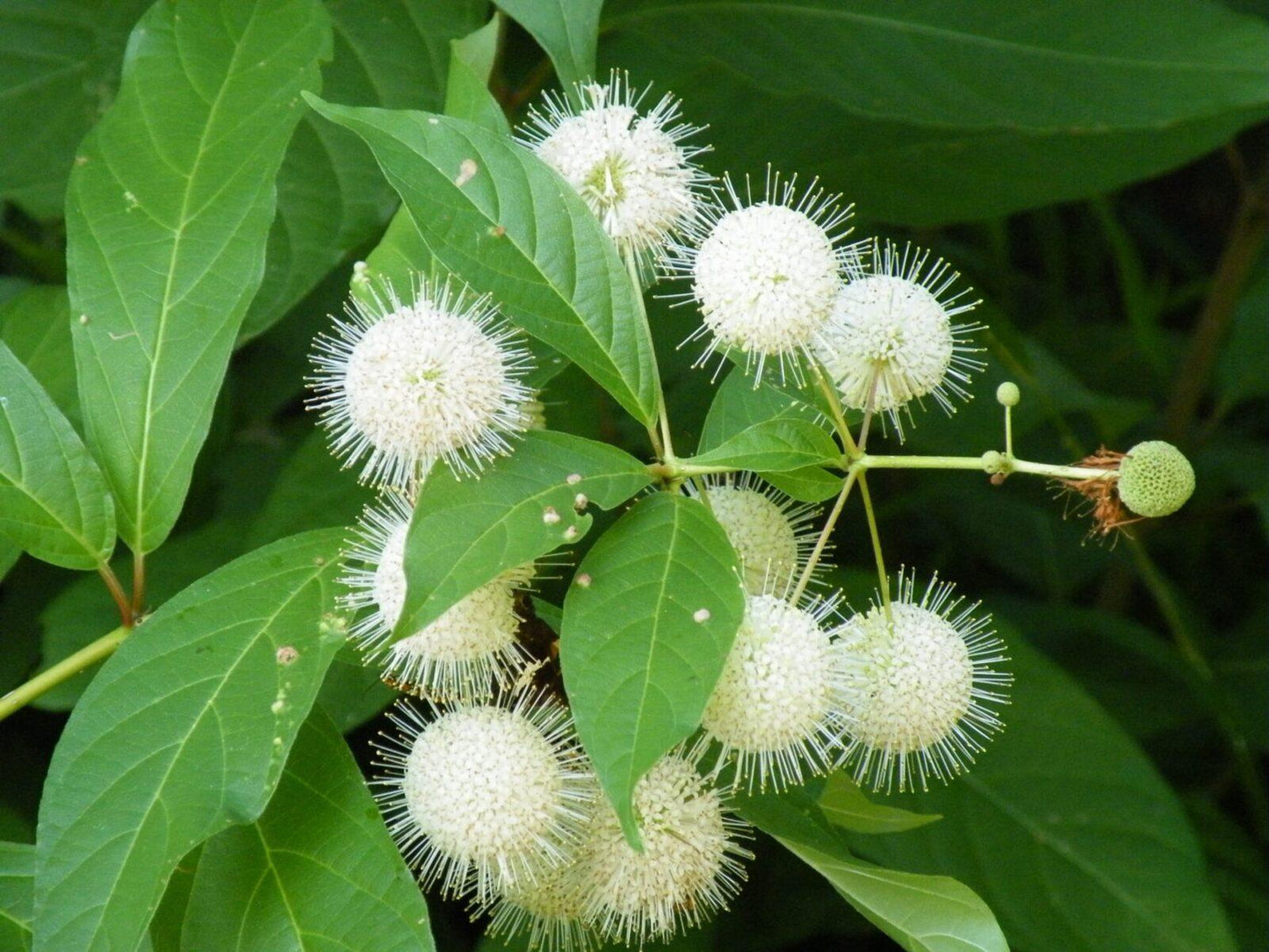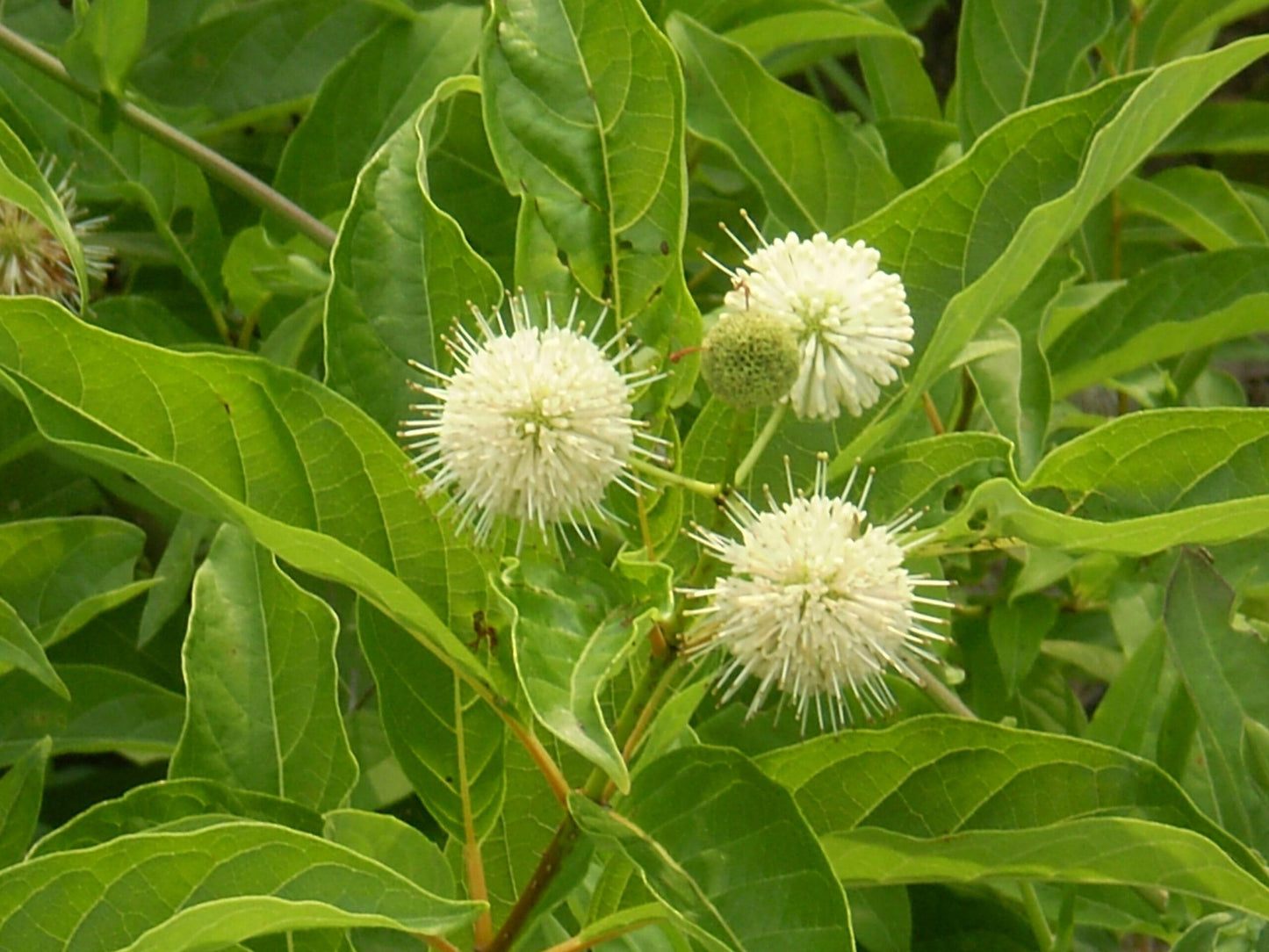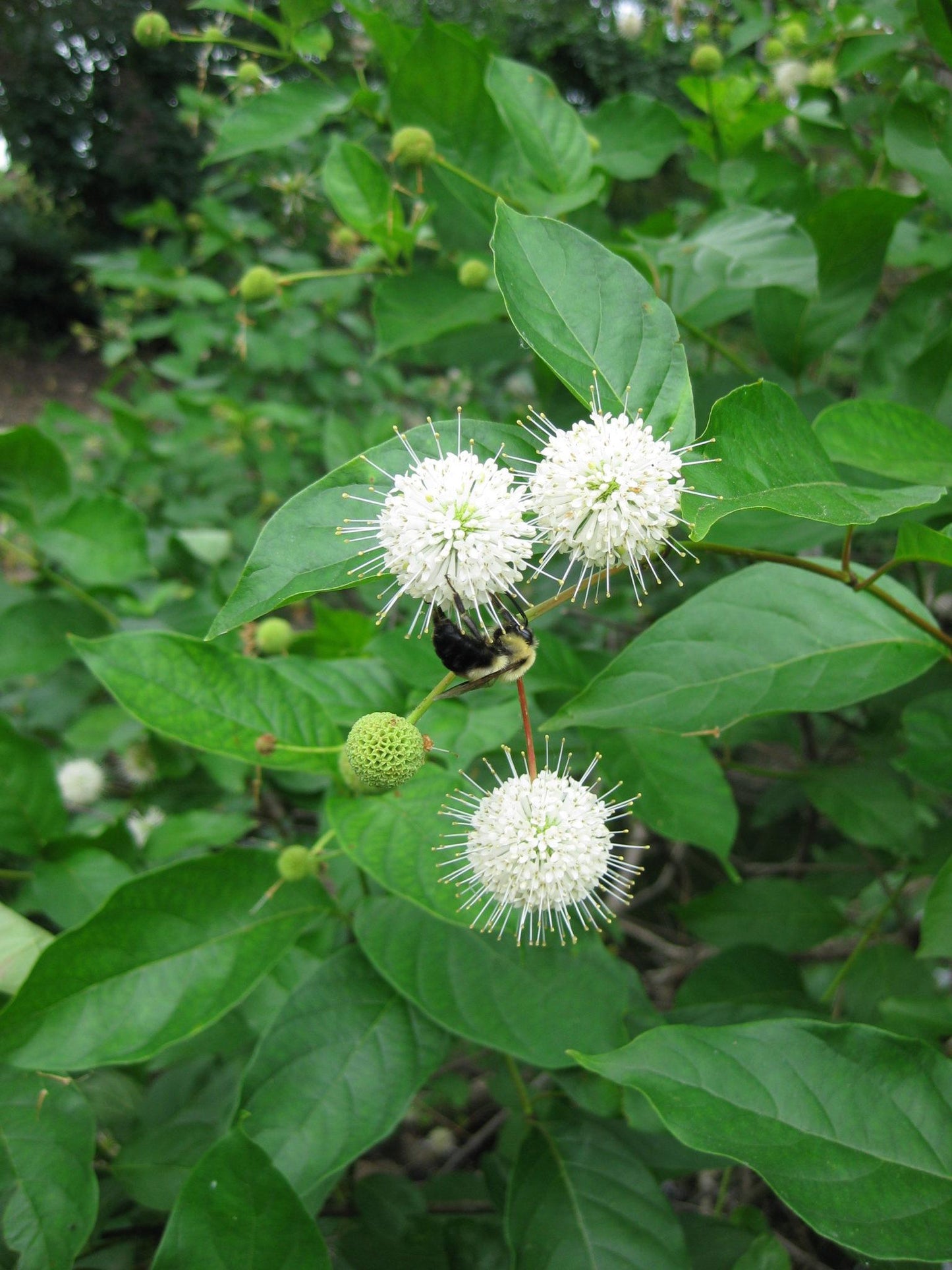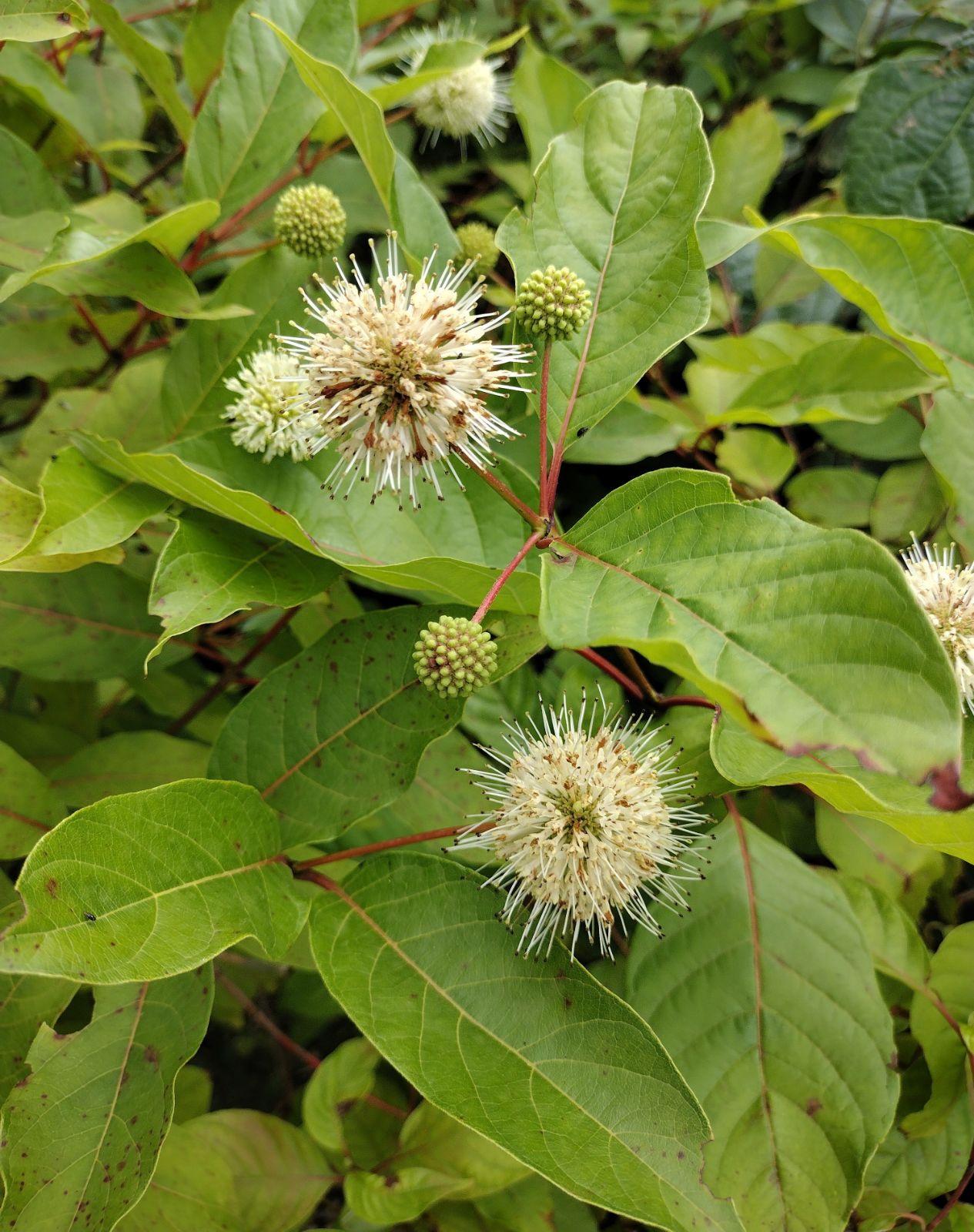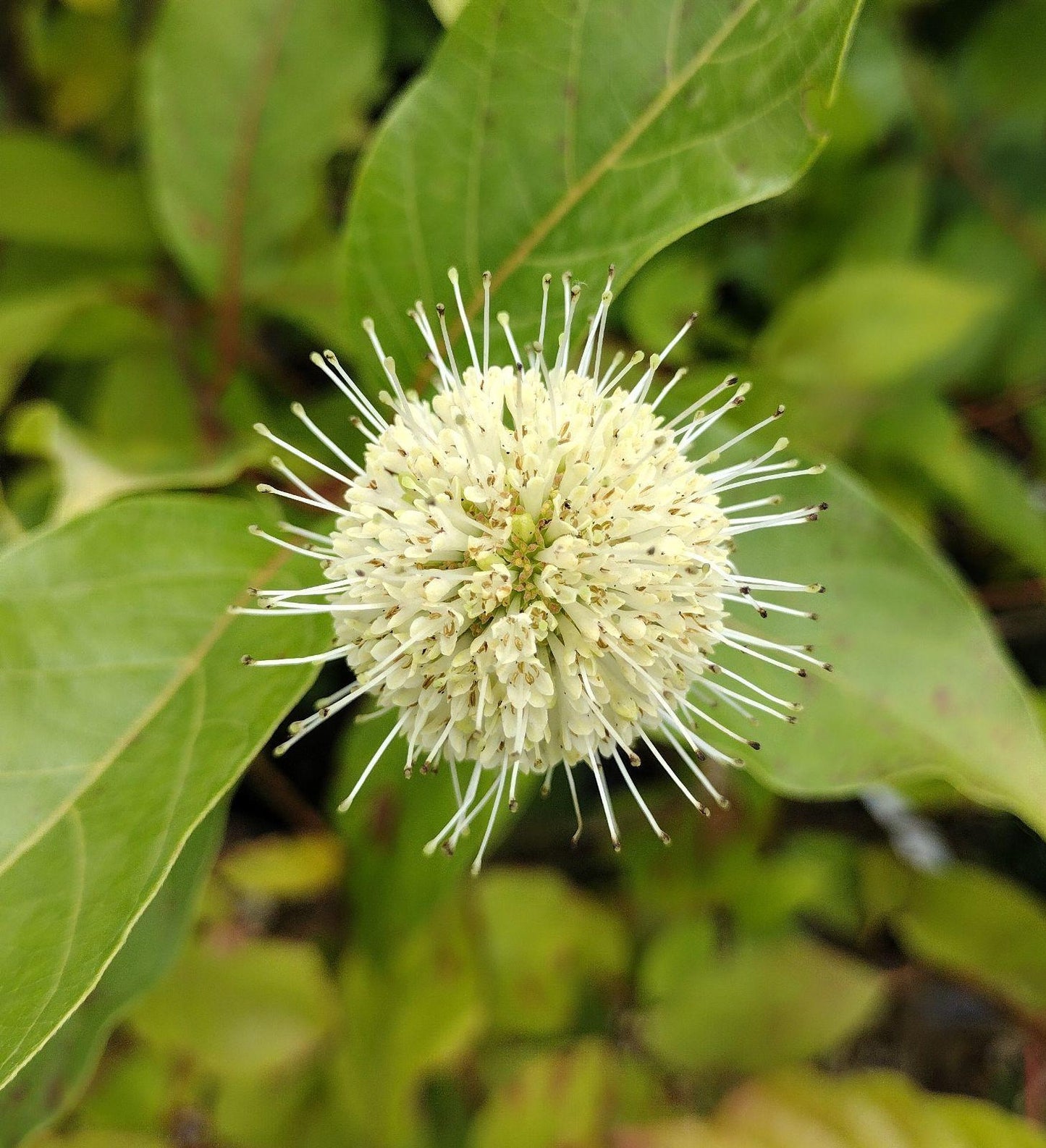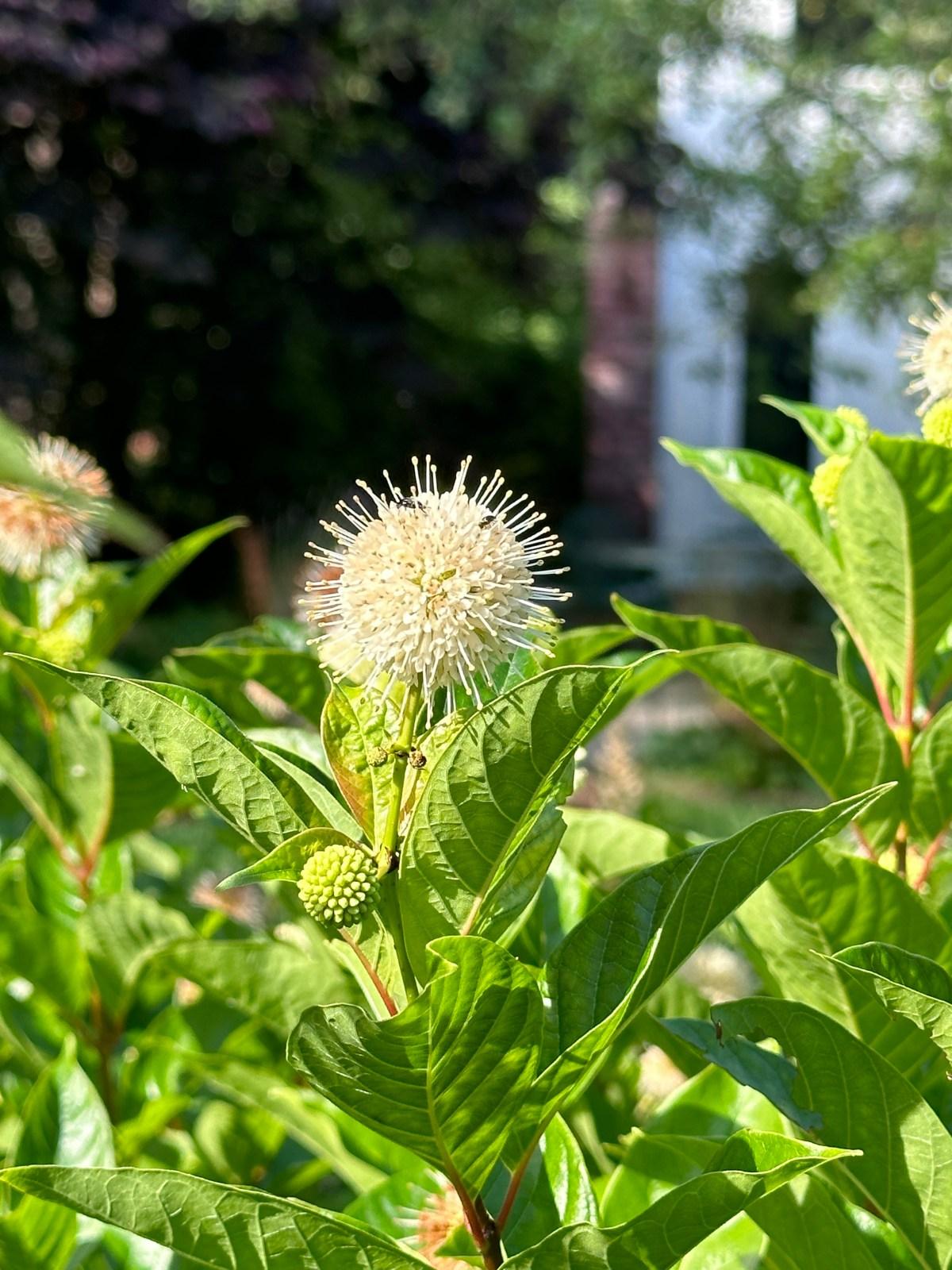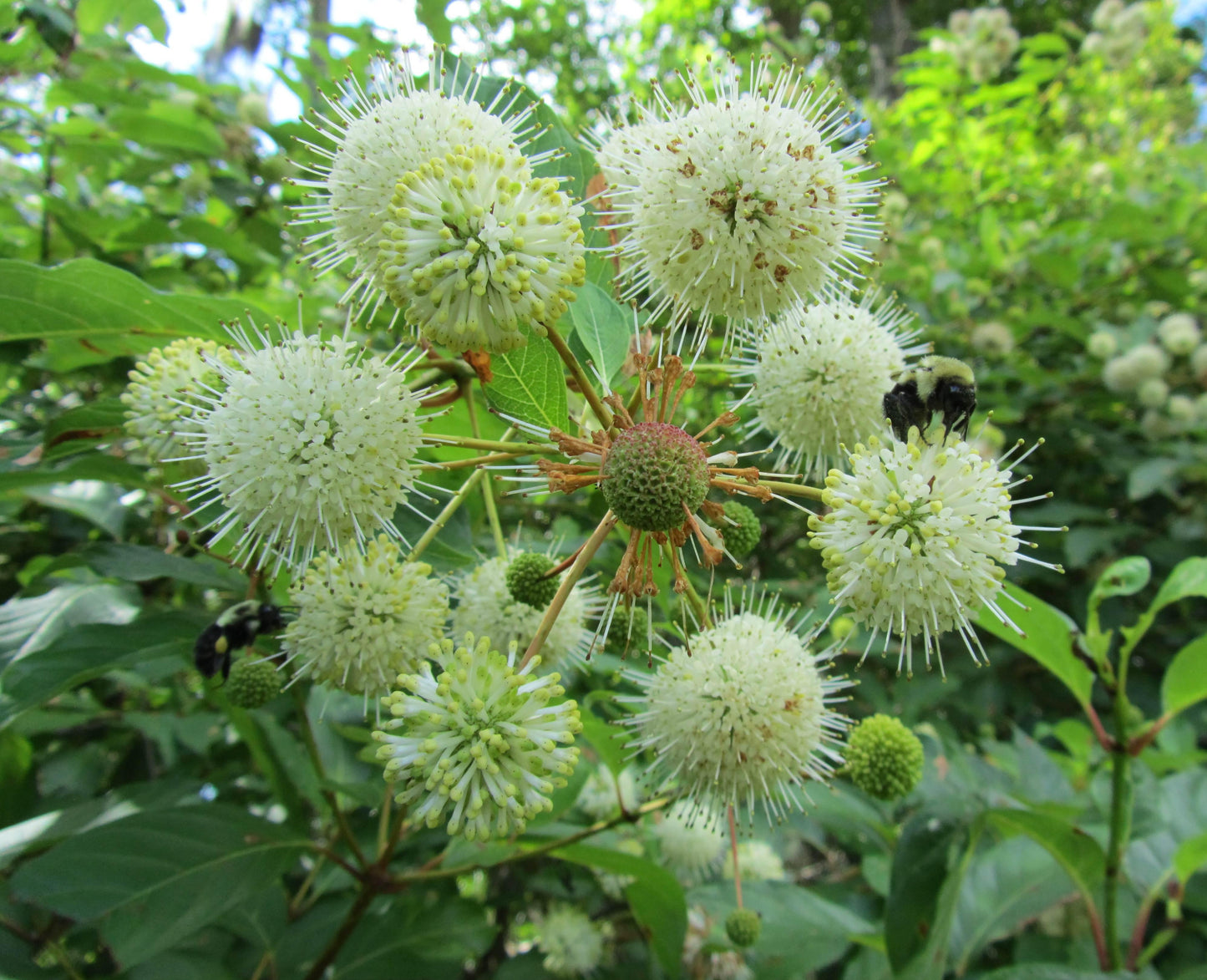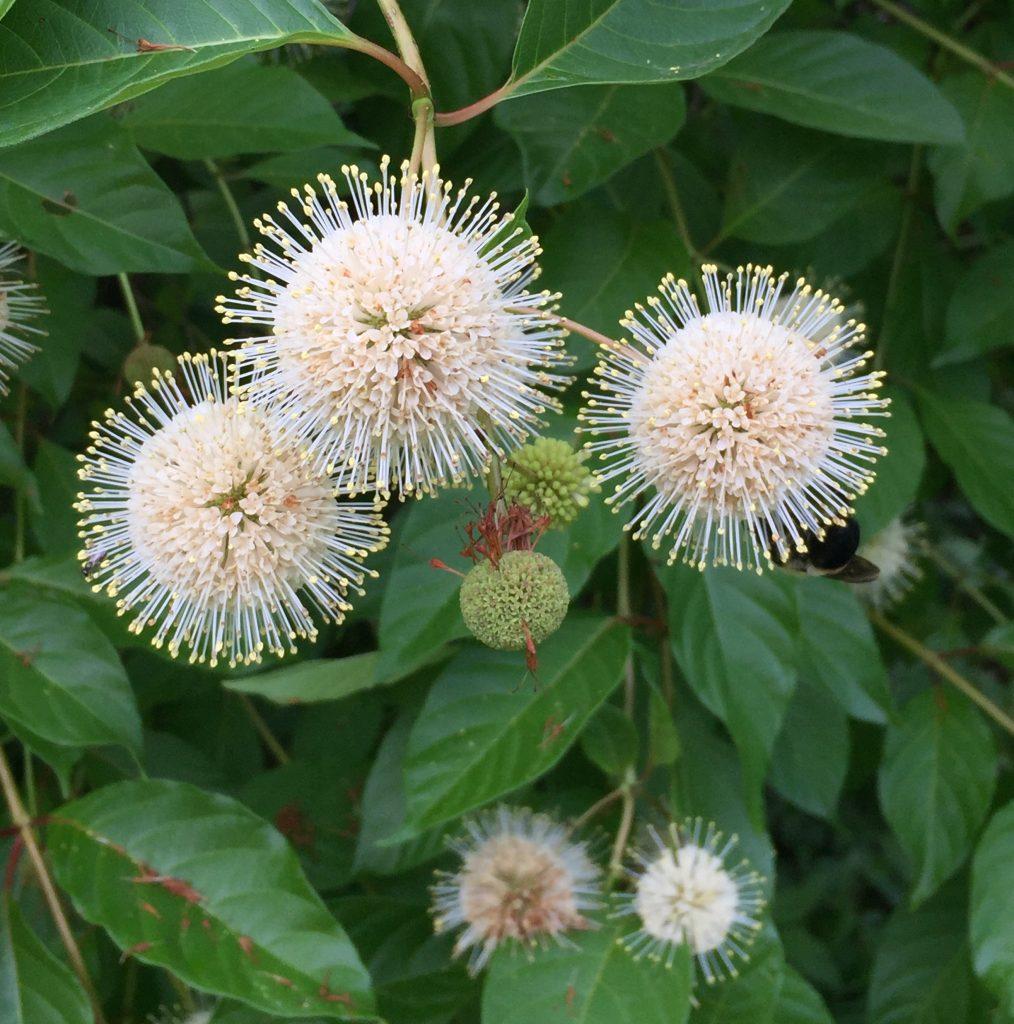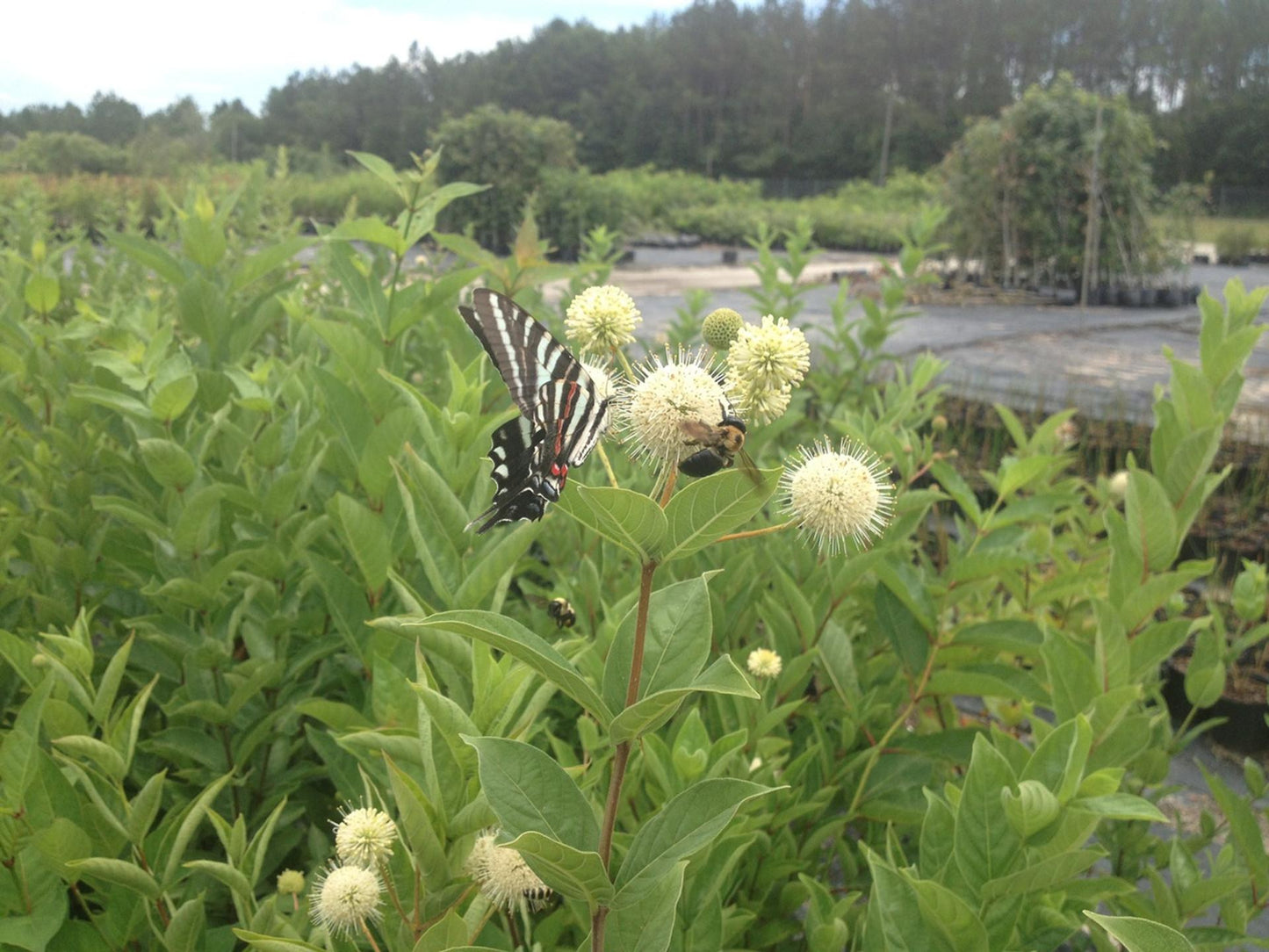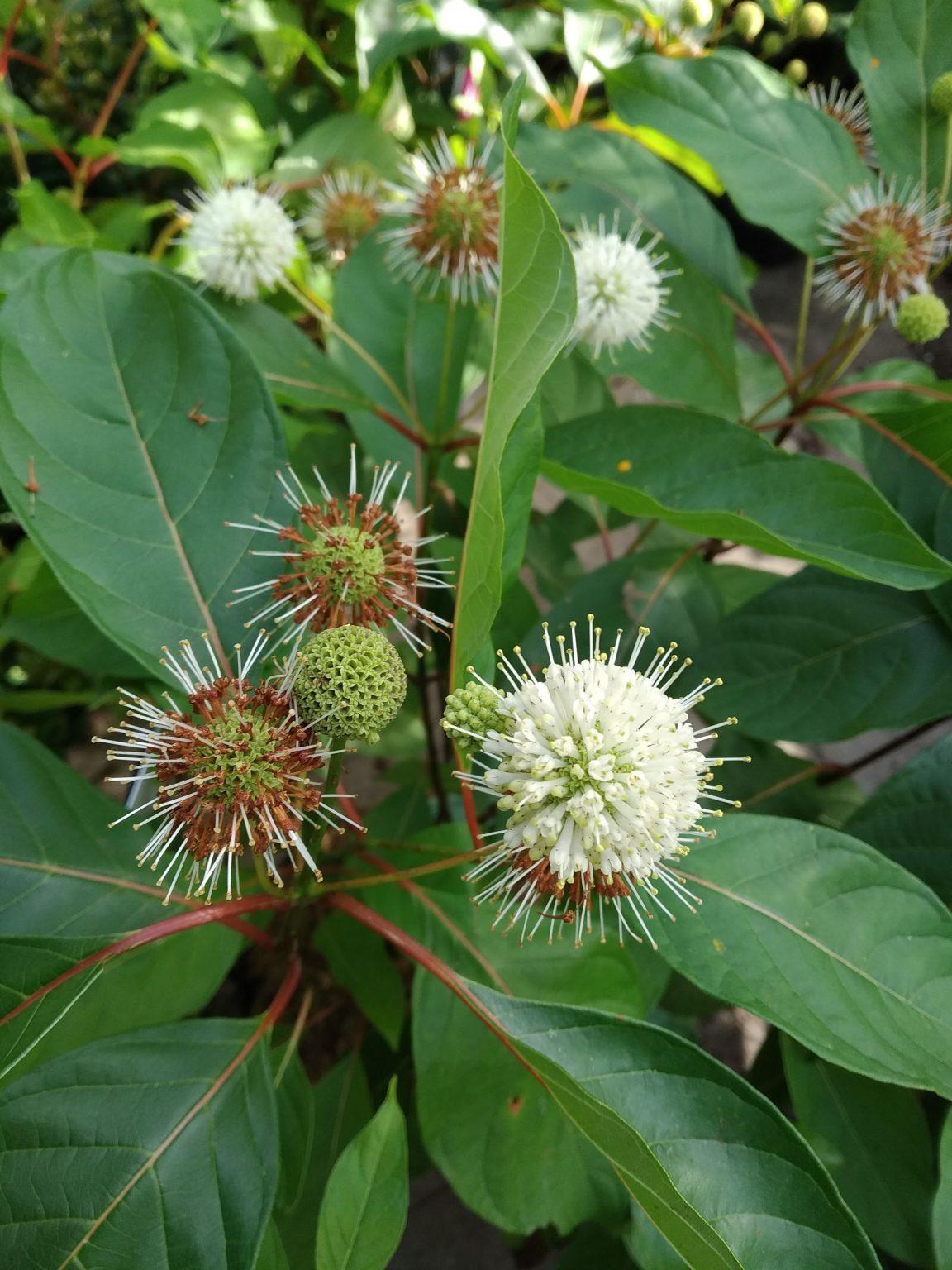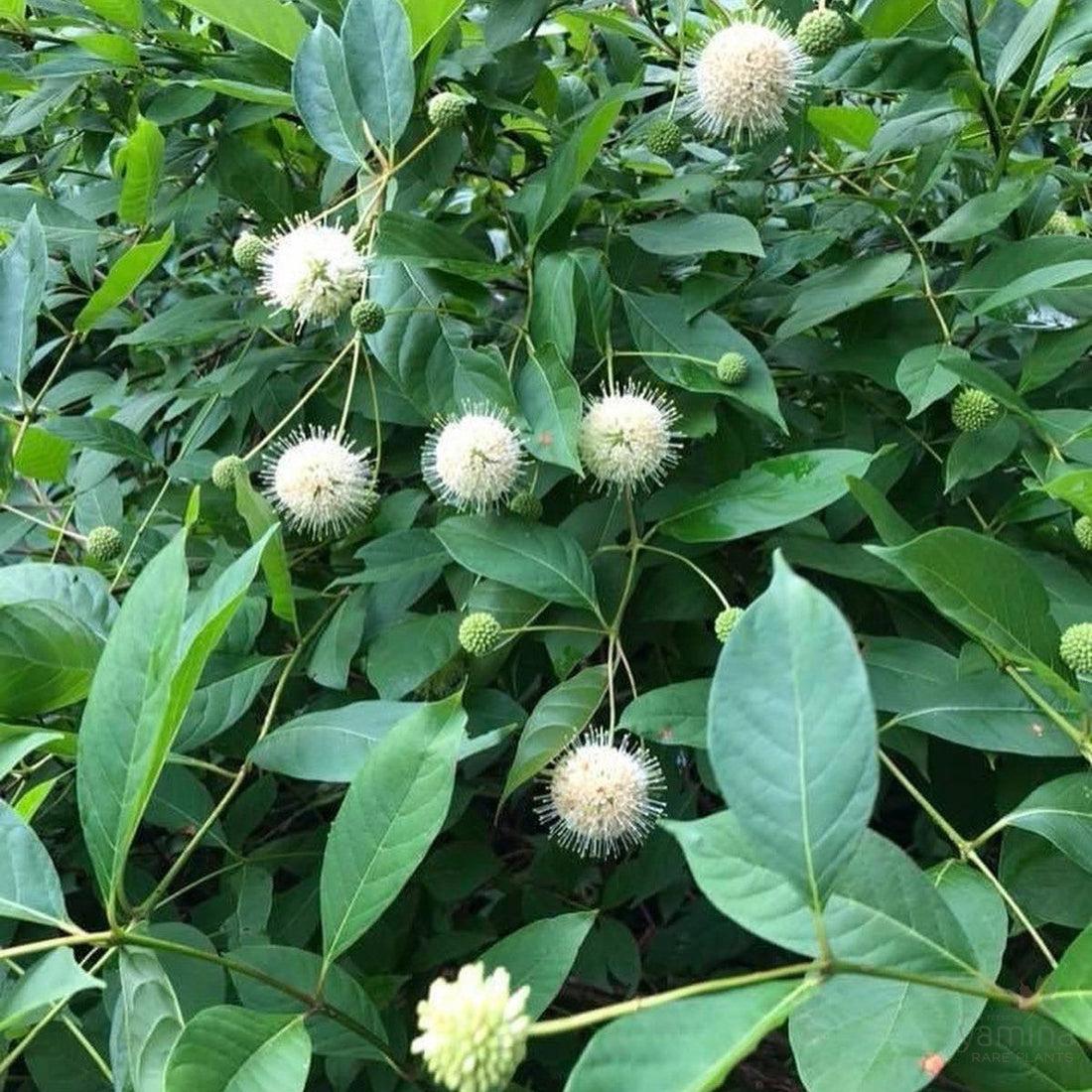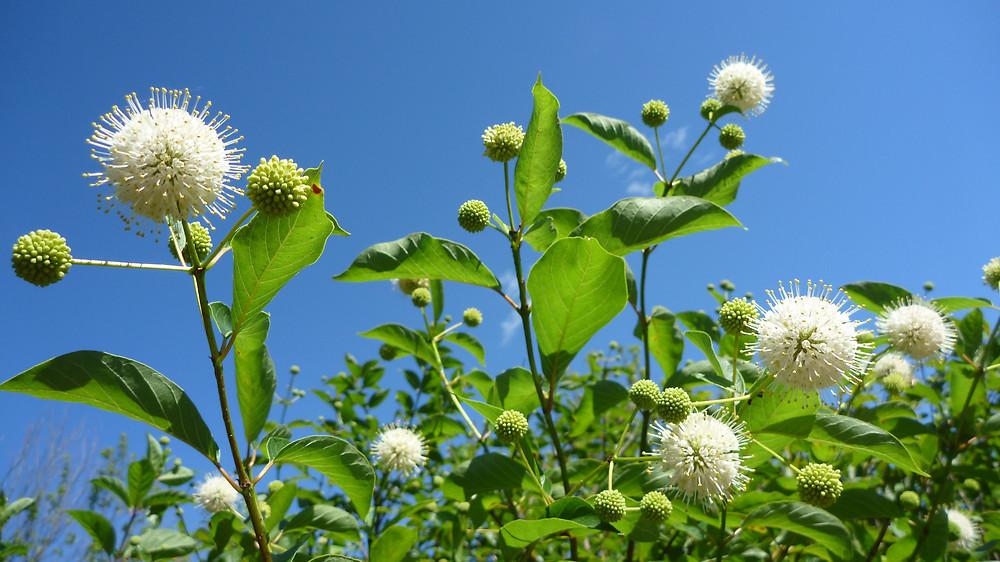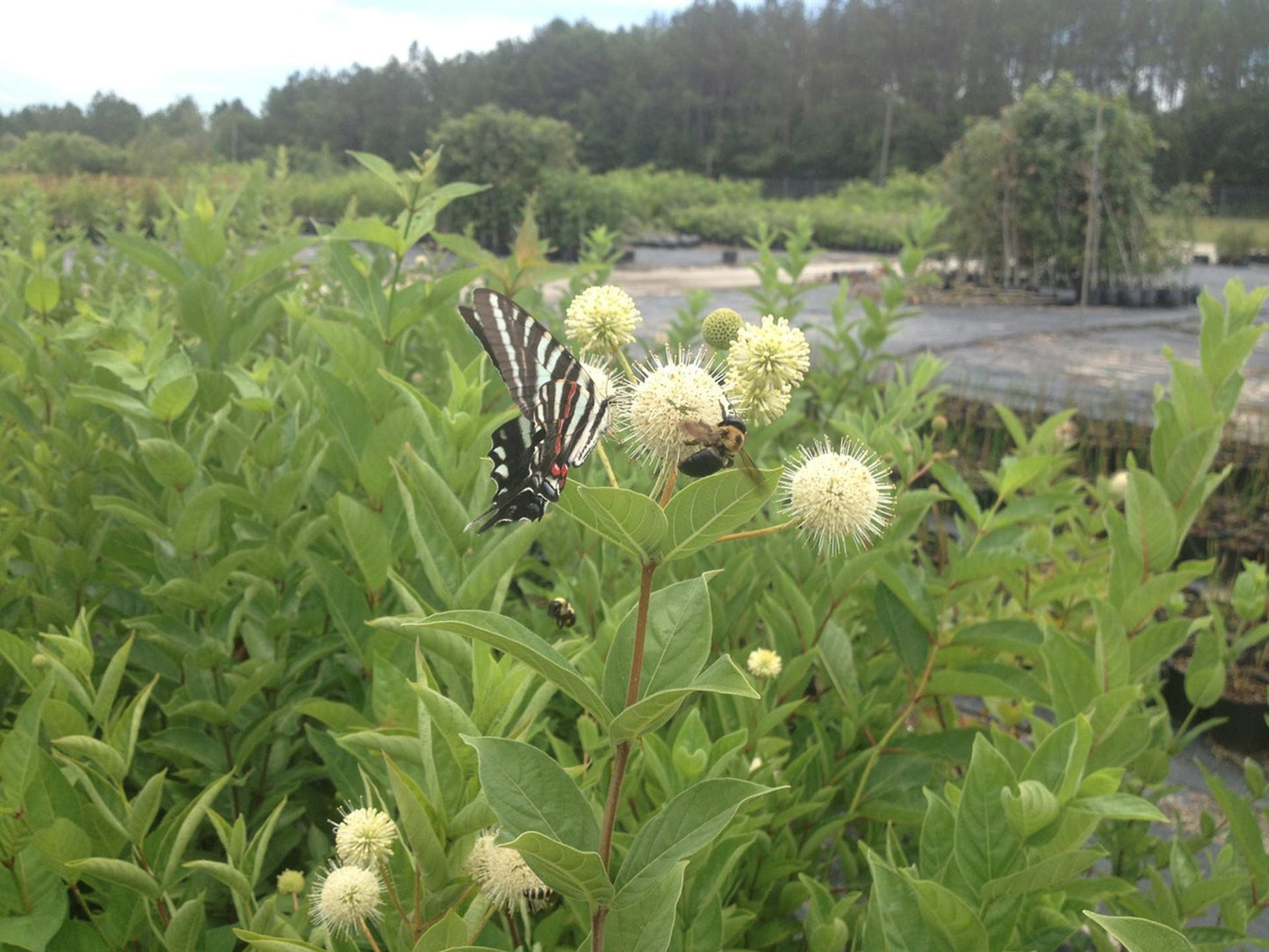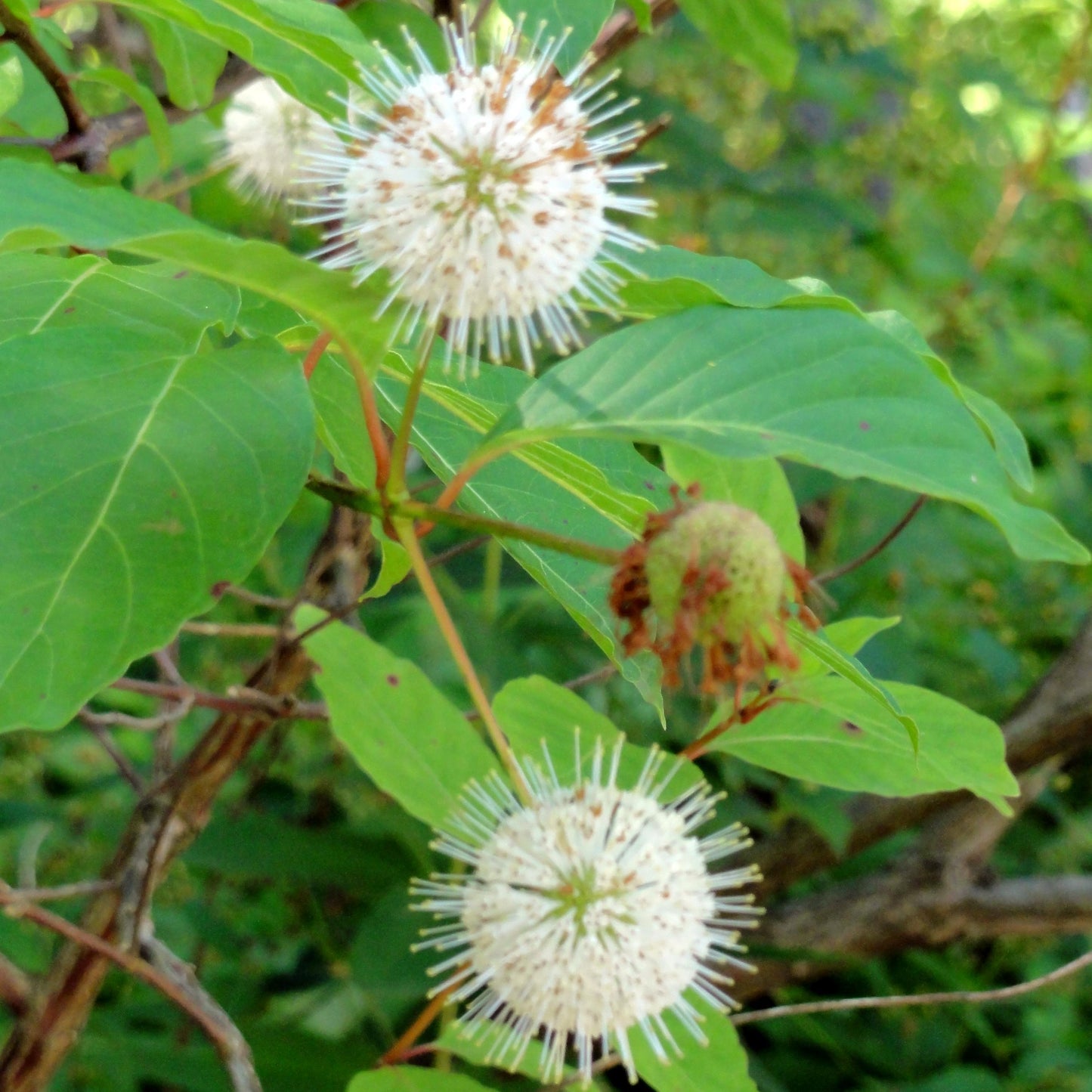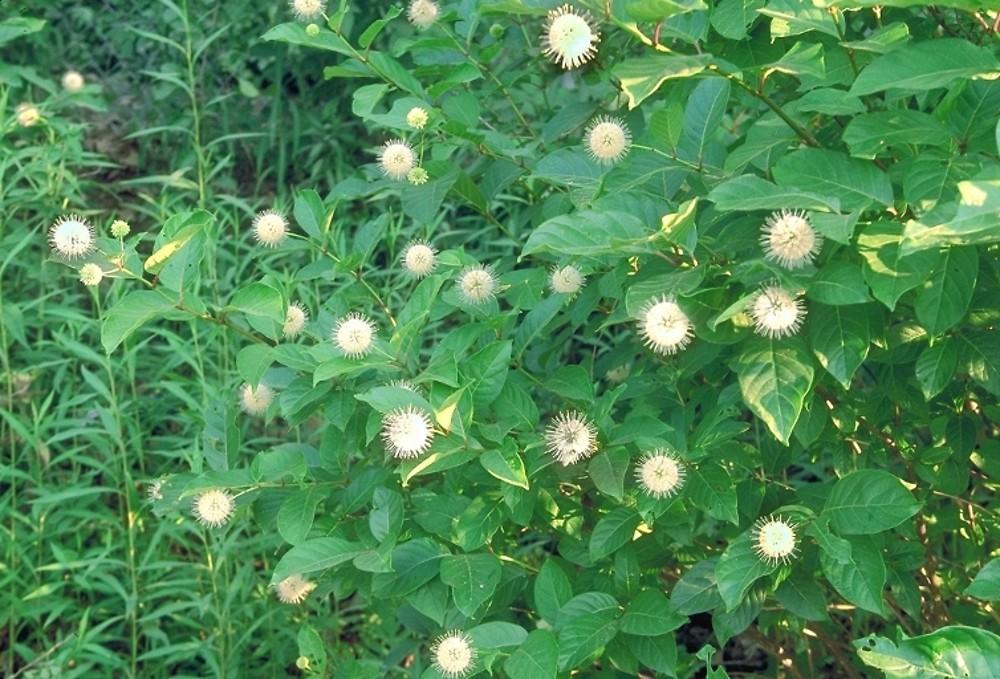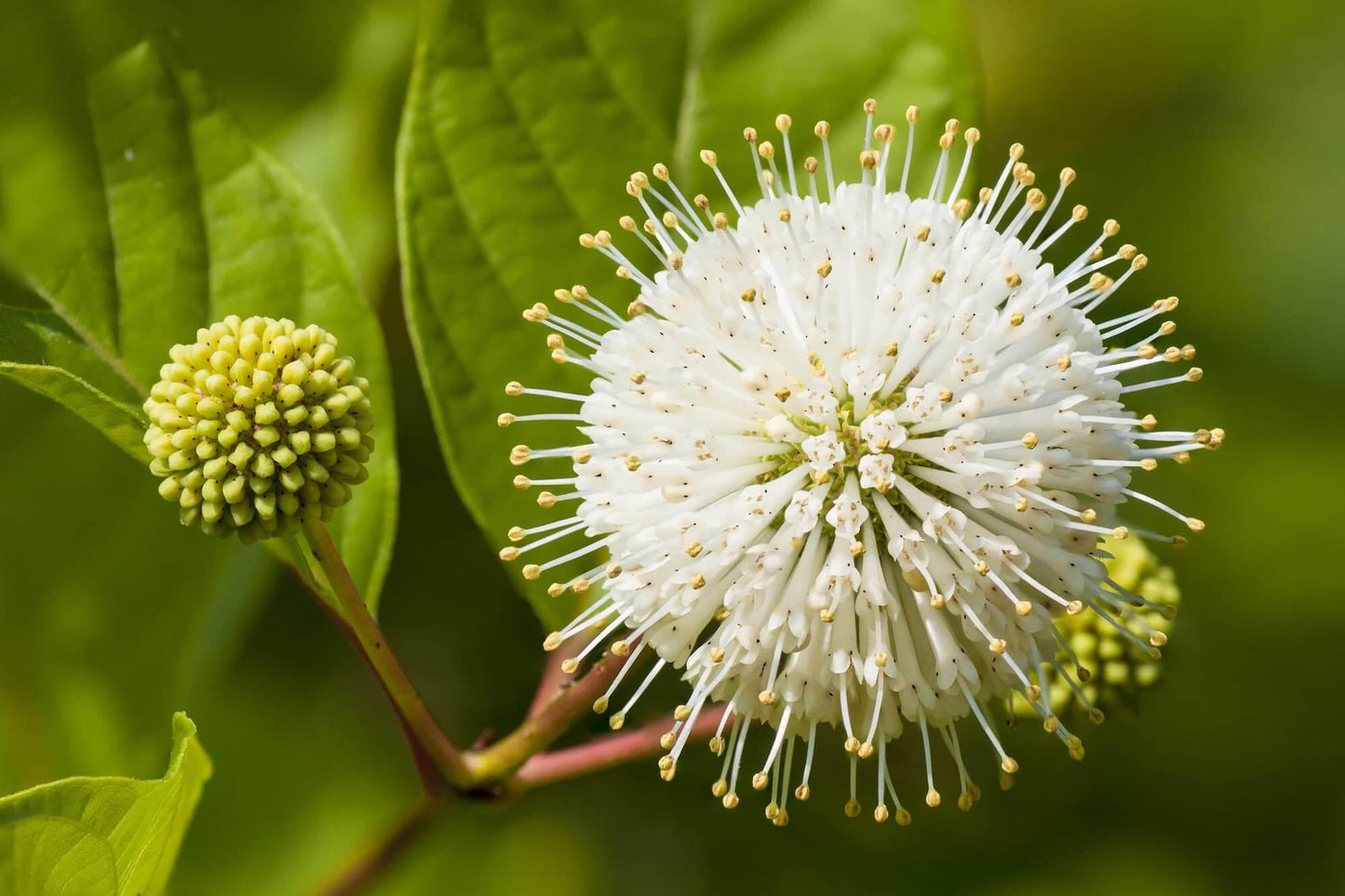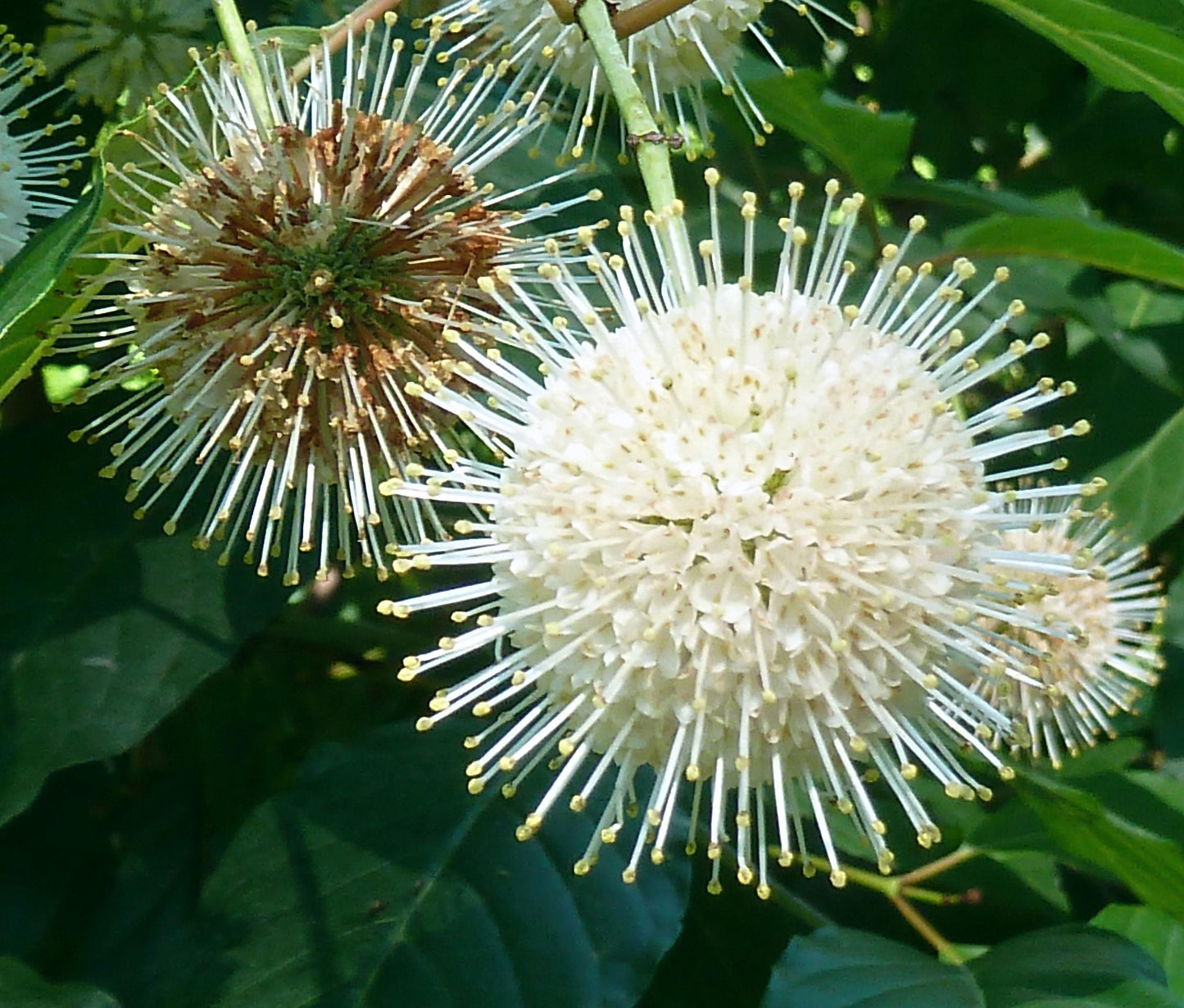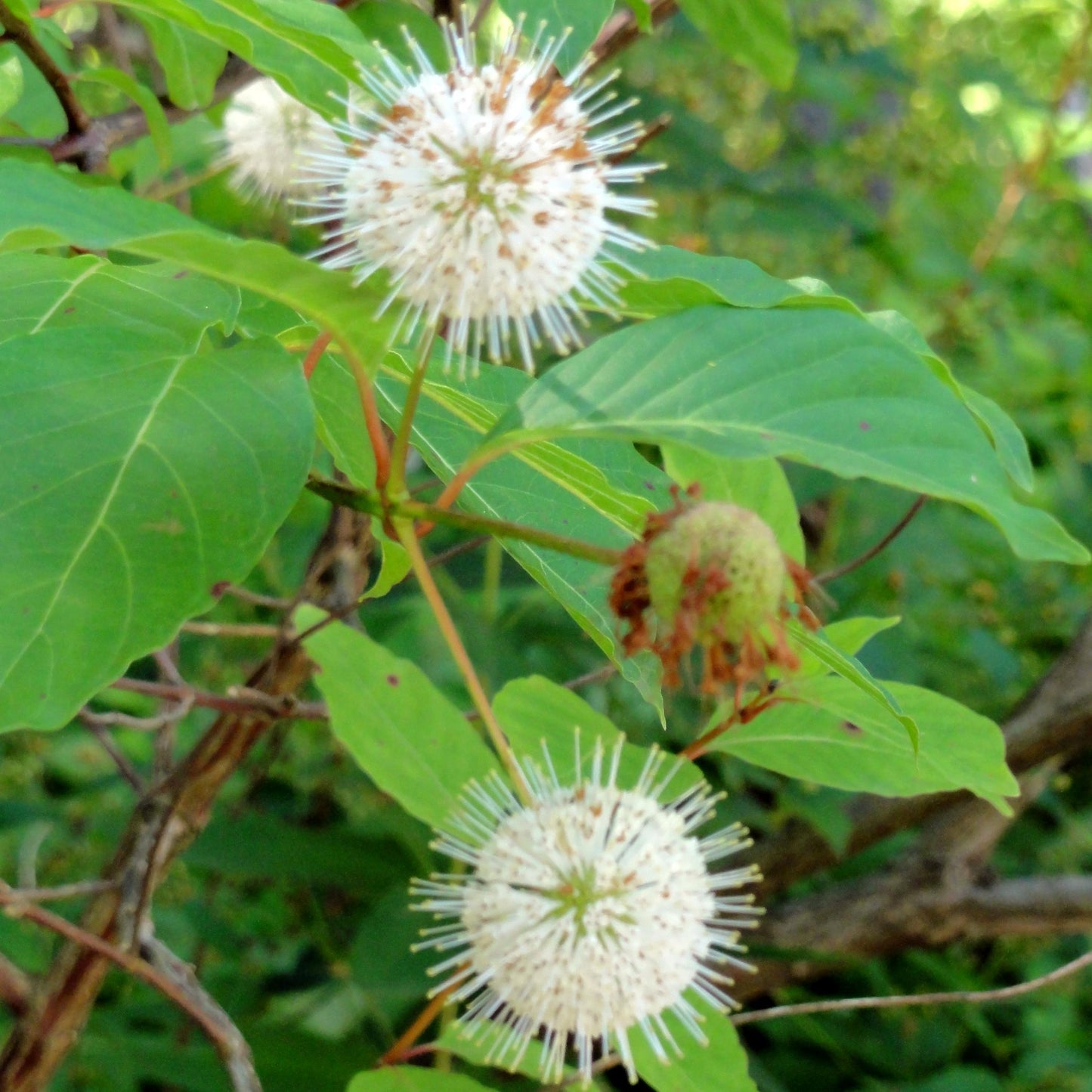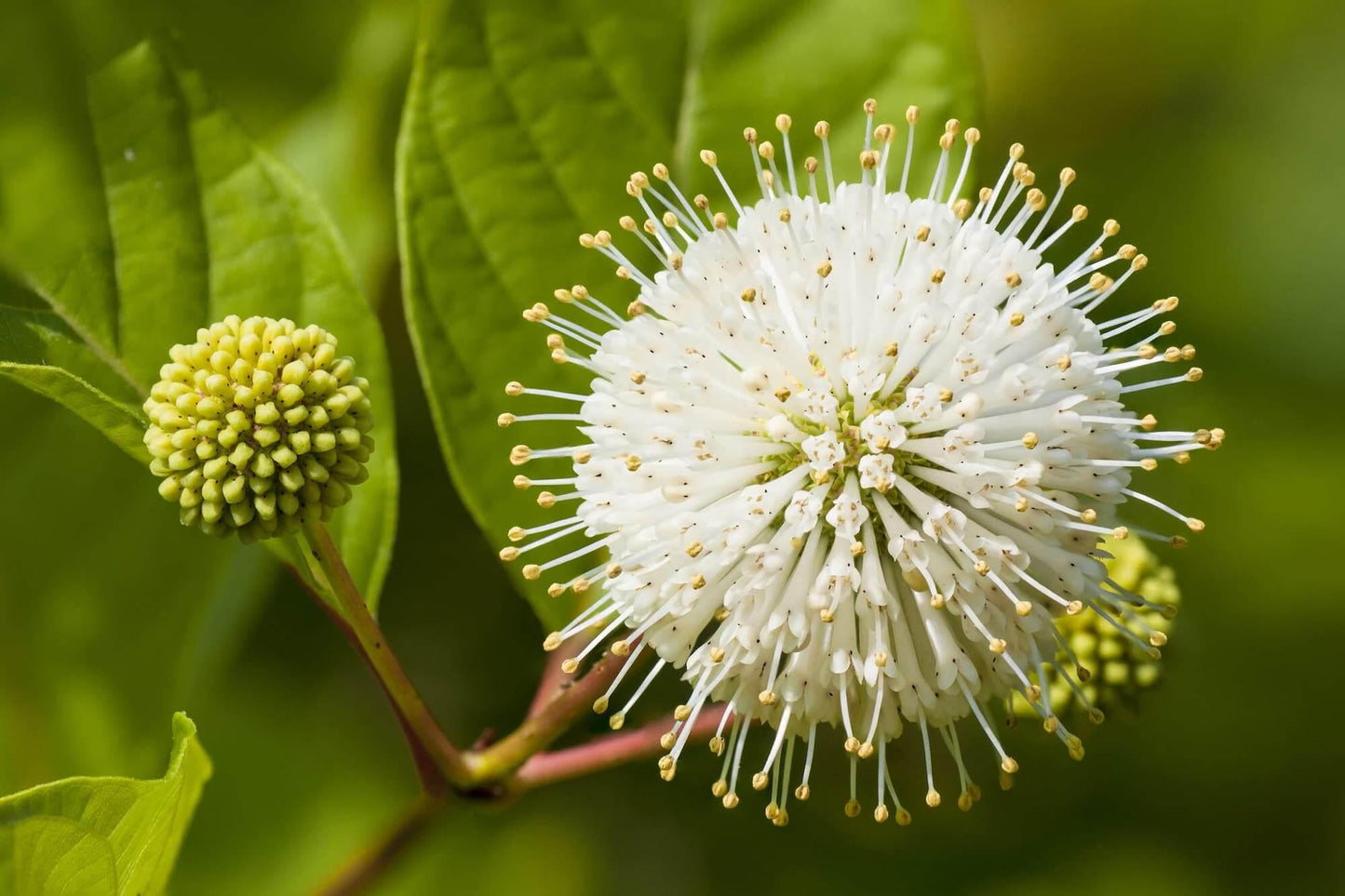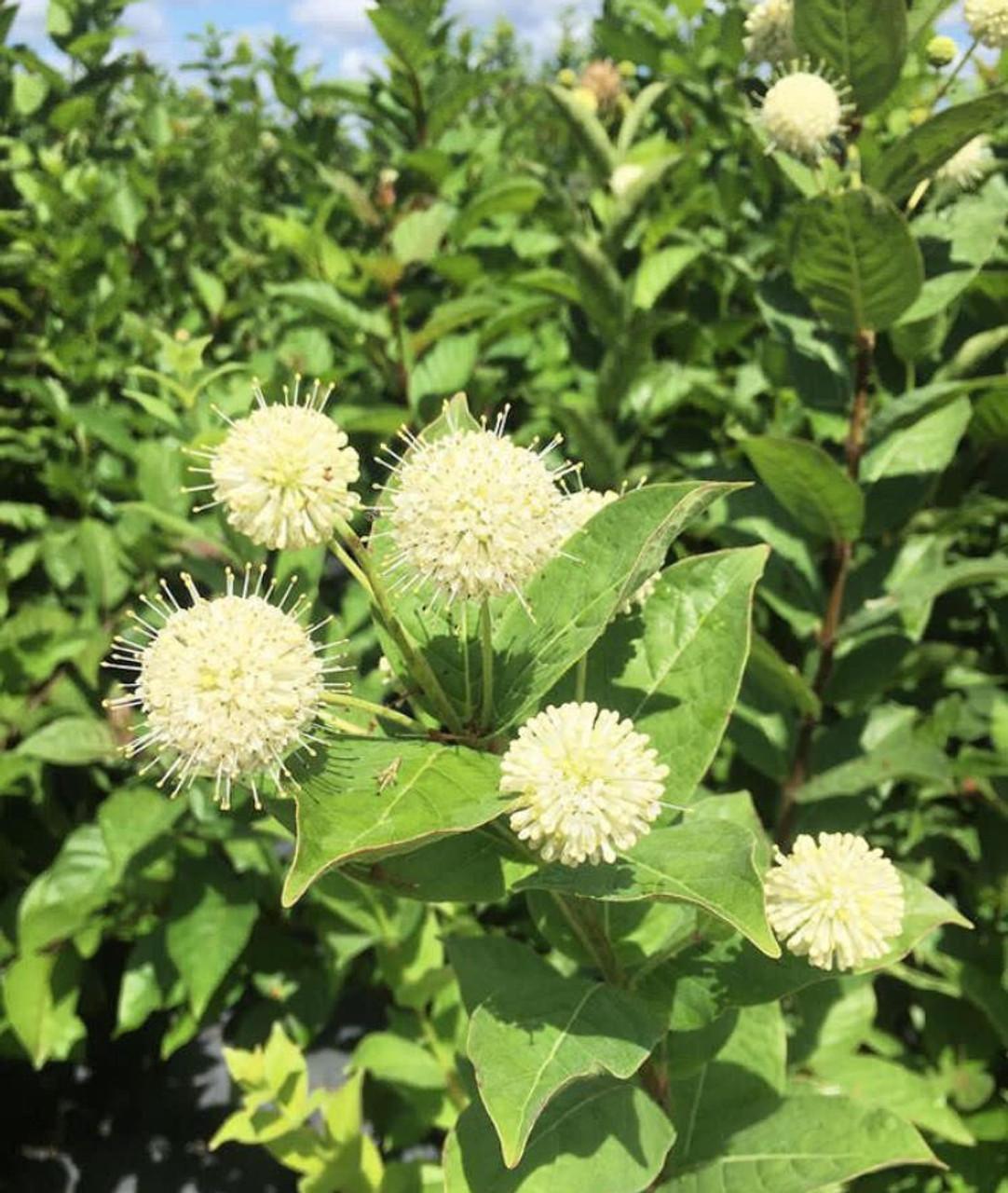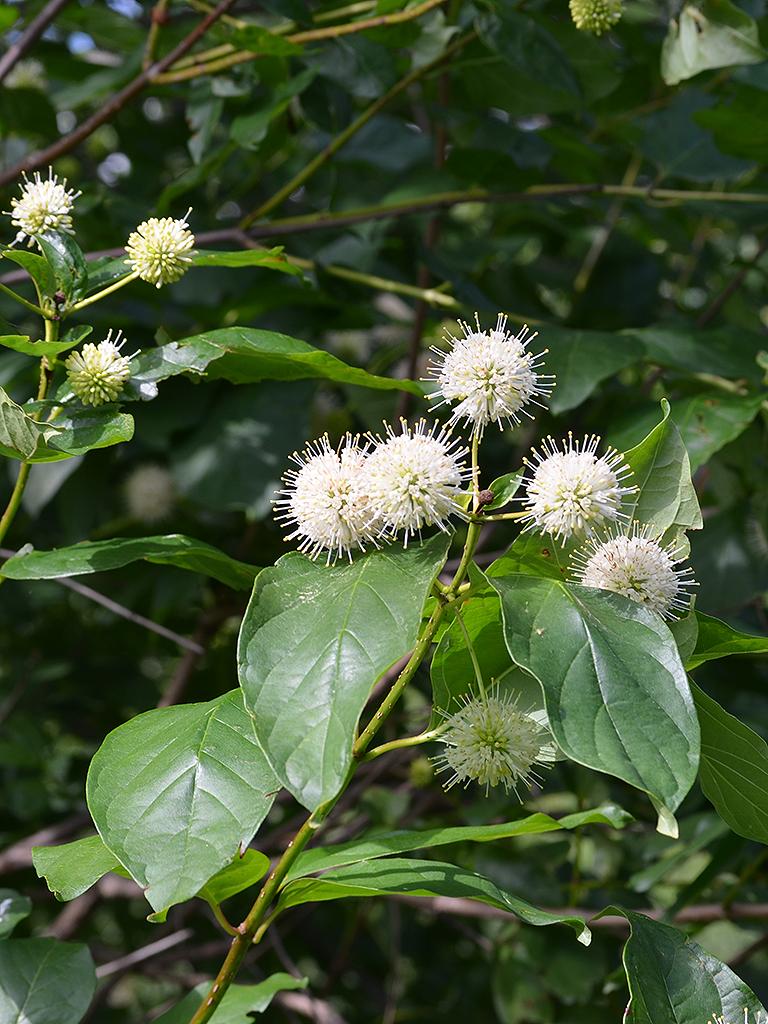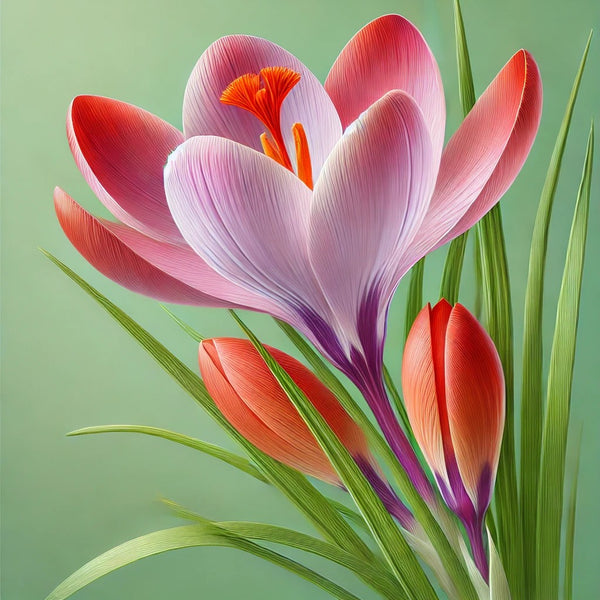1
/
of
21
Buttonbush–Cephalanthus occidentalis–Attracts Pollinators 3 Gallon
Buttonbush–Cephalanthus occidentalis–Attracts Pollinators 3 Gallon
Regular price
$140.00 USD
Regular price
$182.00 USD
Sale price
$140.00 USD
Unit price
/
per
Shipping calculated at checkout.
SKU:nsf6026-redcrocus
Couldn't load pickup availability
Cephalanthus occidentalis
Description
Cephalanthus occidentalis, commonly known as Buttonbush, is a deciduous shrub native to North America. It is well-known for its unique spherical flower heads that resemble buttons. The flowers are creamy white and highly attractive to pollinators, making it a valuable addition to wildlife gardens.
Suggested Uses
Buttonbush is ideal for use in wetland gardens, along pond edges, and in rain gardens. Its ability to thrive in moist conditions makes it perfect for naturalizing in areas prone to flooding.
Plant Details
-
 Botanical Name: Cephalanthus occidentalis
Botanical Name: Cephalanthus occidentalis -
 Common Name: Buttonbush
Common Name: Buttonbush -
 Size & Growth: Typically grows 6-12 feet tall and wide
Size & Growth: Typically grows 6-12 feet tall and wide -
 Hardiness Zones: 5-9
Hardiness Zones: 5-9 -
 Foliage Type: Deciduous
Foliage Type: Deciduous -
 Bloom Time: Late spring to early fall
Bloom Time: Late spring to early fall -
 Growth Rate: Moderate to fast
Growth Rate: Moderate to fast -
 Light Requirements: Full sun to partial shade
Light Requirements: Full sun to partial shade -
 Attracts Pollinators: Yes, especially bees and butterflies
Attracts Pollinators: Yes, especially bees and butterflies -
 Indoor Friendly: No
Indoor Friendly: No -
 Container Friendly: No
Container Friendly: No -
 Deer Resistant: Yes
Deer Resistant: Yes -
 Pet Warning: Toxic if ingested
Pet Warning: Toxic if ingested -
 Fragrant: No
Fragrant: No -
 Cut Flower: Yes
Cut Flower: Yes -
 Grows Well With: Iris, Cattails, and other moisture-loving plants
Grows Well With: Iris, Cattails, and other moisture-loving plants
Care Tips
-
 Planting Instructions: Plant in spring or fall in a location with moist soil
Planting Instructions: Plant in spring or fall in a location with moist soil -
 Soil Moisture: Prefers consistently moist to wet soil
Soil Moisture: Prefers consistently moist to wet soil -
 Soil Type: Tolerates a range of soil types, including clay and sandy soils
Soil Type: Tolerates a range of soil types, including clay and sandy soils -
 Humidity: Thrives in high humidity environments
Humidity: Thrives in high humidity environments -
 Pruning Instructions: Prune in late winter to early spring to maintain shape
Pruning Instructions: Prune in late winter to early spring to maintain shape -
 Winter Care: Mulch base to protect roots in colder climates
Winter Care: Mulch base to protect roots in colder climates -
 Planting Depth: Plant at the same depth as it was in the nursery container
Planting Depth: Plant at the same depth as it was in the nursery container -
 Fertilization: Fertilize in early spring with a balanced fertilizer
Fertilization: Fertilize in early spring with a balanced fertilizer -
 Special Care: Ensure the plant does not dry out, especially in hot weather
Special Care: Ensure the plant does not dry out, especially in hot weather
Share
